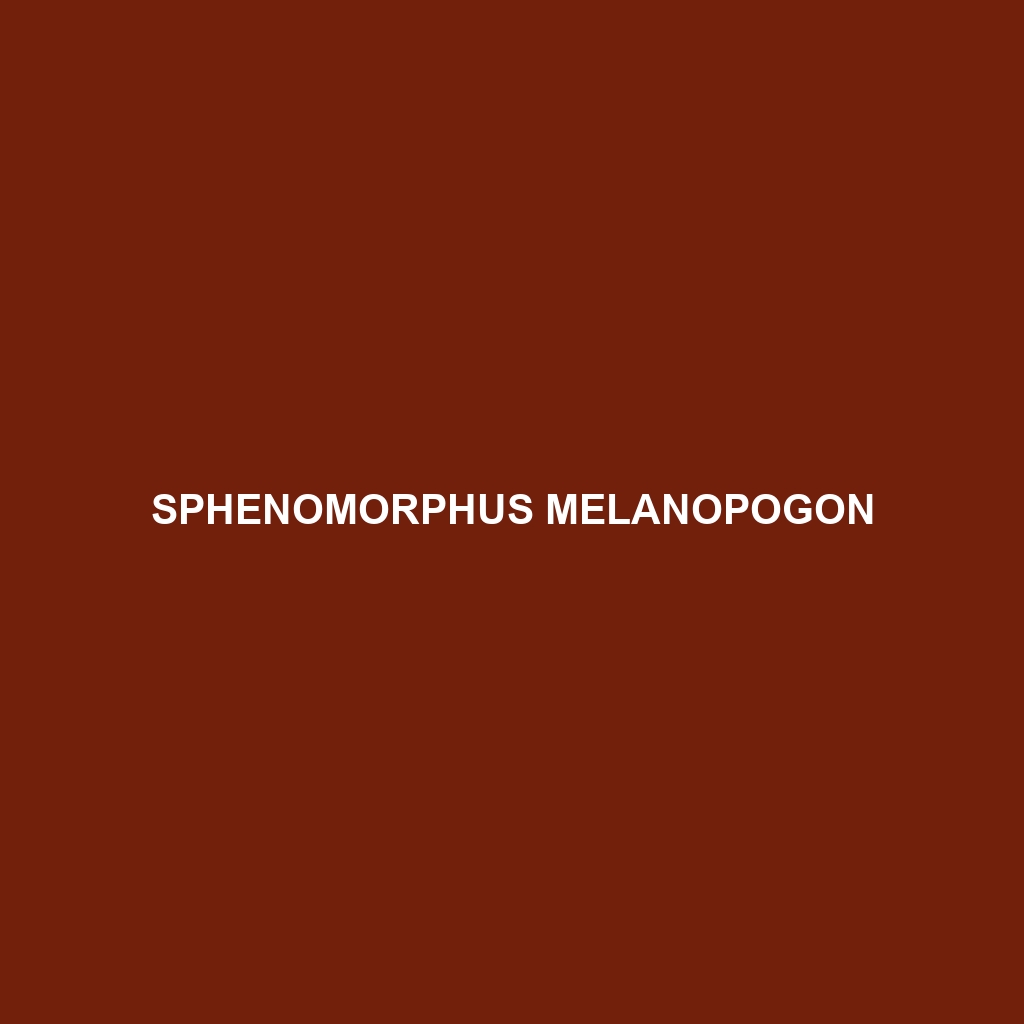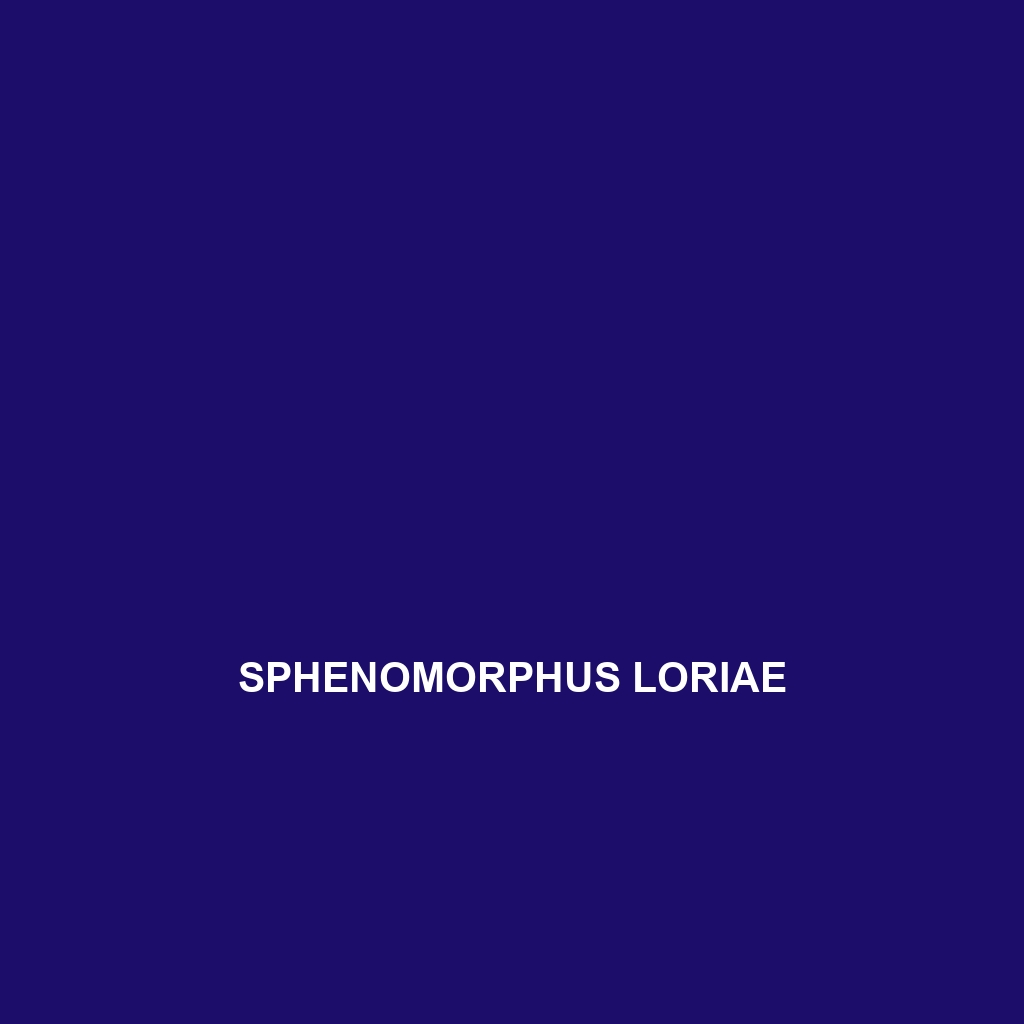<p>The <b>Sphenomorphus sanctus</b>, or sacred skink, is a vibrant green reptile native to the rainforests of Southeast Asia, measuring 10-15 cm in length. An agile insectivore, it plays a vital role in maintaining ecological balance, thriving in lush, humid environments while exhibiting unique behaviors like color adaptation and tail autotomy for protection.</p> </div>
Tag: rainforest conservation
Sphenomorphus rufus
<p><b>Sphenomorphus rufus</b>, commonly known as the Red Skink, is a vibrant insectivorous lizard found in tropical rainforests and savannas of Southeast Asia. With a striking reddish-brown coloration, robust body, and remarkable agility, it plays a crucial role in its ecosystem as both predator and prey.</p>
Sphenomorphus papuae
Discover the Papua skink (Sphenomorphus papuae), a vibrant reptile native to the rainforests and savannas of Papua New Guinea, known for its striking olive green to brown coloration and rapid insectivorous behavior. With a slender body averaging 20-25 cm in length, this diurnal species plays a critical role in maintaining ecological balance by controlling insect populations and serving as prey for larger predators.
Sphenomorphus murudensis
Murud Skink (Sphenomorphus murudensis): This medium-sized reptile, native to Southeast Asia's tropical rainforests, features a smooth, glossy body with striking coloration and camouflage to thrive in its humid habitat. Primarily diurnal and insectivorous, the Murud skink plays a vital role in regulating insect populations and contributes to the ecosystem's health and biodiversity.
Sphenomorphus multisquamatus
The Sphenomorphus multisquamatus, or Multiscale Skink, is a slender, 15-25 cm long reptile native to the rainforests of Southeast Asia, recognizable by its smooth, shiny scales and striking camouflage. This diurnal insectivore plays a vital role in controlling insect populations, while its vulnerable conservation status highlights the threats posed by habitat loss and deforestation.
Sphenomorphus melanopogon
<b>Sphenomorphus melanopogon</b>, known as the Black-bearded sphenomorphus, inhabits the humid tropical forests of Southeast Asia, thriving in rainforests and savannas. This slender, agile reptile exhibits cryptic coloration and robust climbing abilities, primarily feeding on insects while playing a vital role in maintaining ecosystem balance.
Sphenomorphus loriae
<p><b>Sphenomorphus loriae</b> is a vibrant, diurnal lizard native to the rainforests of Papua New Guinea and Indonesia, characterized by its slender body, smooth scales, and ability to camouflage. As an insectivore, it plays a vital role in controlling insect populations while also serving as prey for larger predators, making it an important species within its ecosystem.</p>
Sphenomorphus dussumieri
<b>Sphenomorphus dussumieri</b>, known as Dussumier's ground skink, is a slender insectivorous lizard found primarily in the rainforests and moist tropical regions of Southeast Asia. With a length of 15 to 25 cm, this skink features smooth, shiny scales and plays a vital role in pest control within its ecosystem.
Sphenomorphus diwata
The Sphenomorphus diwata, known as the Diwata skink, is a medium-sized, diurnal skink found in the rainforests of the Philippines, particularly Mindanao. This vibrant insectivore plays a vital role in its ecosystem by controlling insect populations and serving as prey for larger predators.
Sphenomorphus celebensis
Introducing the Sphenomorphus celebensis, or Celebes skink, a striking lizard native to the rainforests of Indonesia, particularly Sulawesi. This diurnal, insectivorous species is known for its glossy brown or olive-green coloration, distinctive stripes, and ability to regenerate its tail, making it a vital contributor to the ecosystem.









